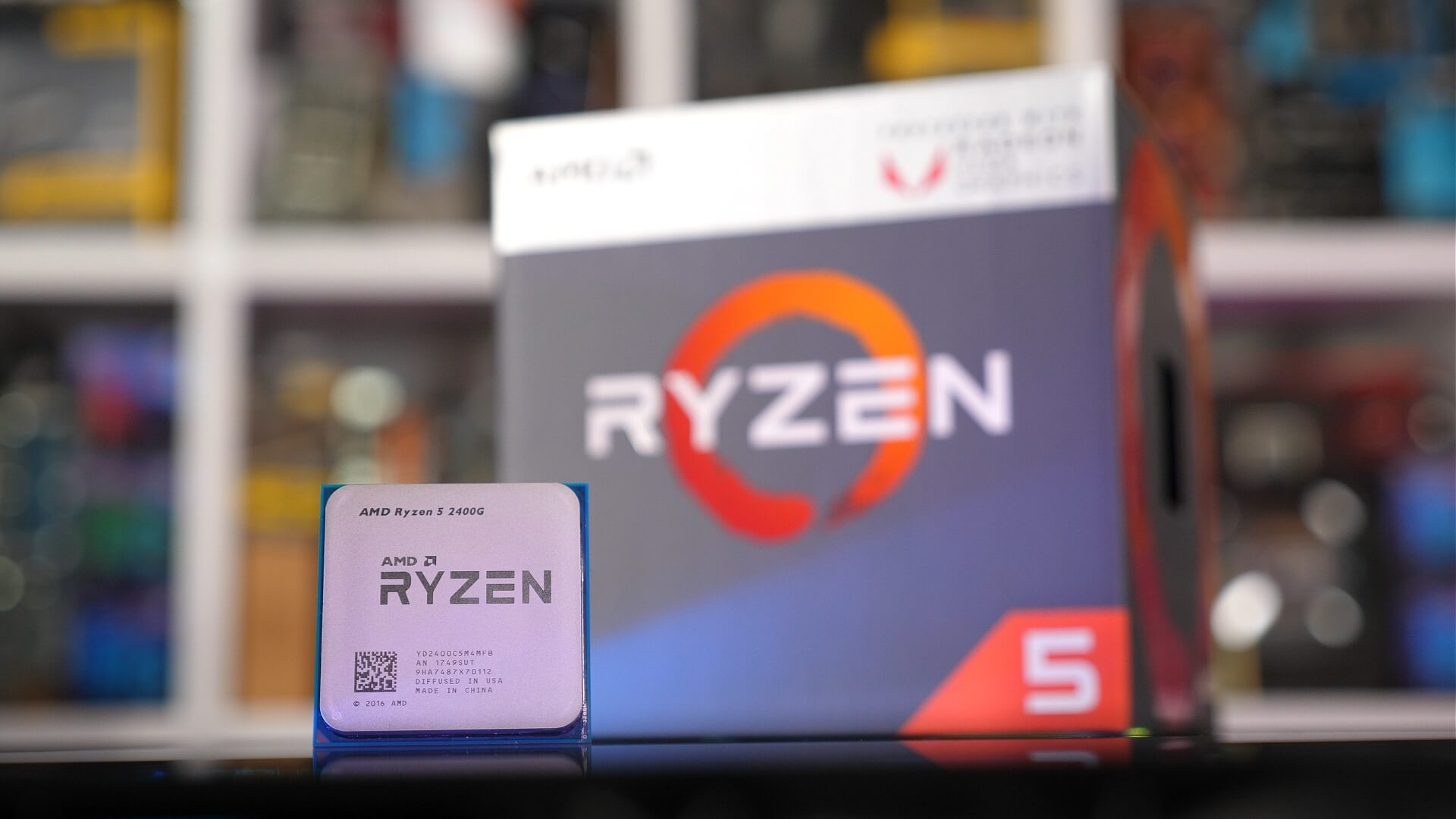Updating its entry-level and mid-range product lines, AMD's new Ryzen 5 2400G and Ryzen 3 2200G APUs are set to replace the company's Ryzen 5 1400 and Ryzen 3 1200, and may even invalidate the R3 1300X and R5 1500X to some extent. Besides the revised CPU, what makes these new entry level chips special is that they come with integrated Radeon Vega graphics. We saw that working quite well a few months back on laptops, but unlike portable systems, there are far less constraints on the desktop.
Codenamed Raven Ridge, the new chips are based on the same 14nm process as the original Ryzen, although AMD is marketing these as "14nm+" process, akin to the strategy Intel has used recently. What this essentially means is that the manufacturing process has matured to the point where they can dial up the clock speeds a little more and this is exactly what AMD has done here.

Along with a frequency boost, Raven Ridge chips have a single CCX module, which is to say that they are limited to four cores (see our original Ryzen review if you're lost). There are pros and cons to this design, with the key advantage being that the latency penalty when moving data between CCX modules is eliminated, though based on our own testing that hasn't seemed like a big issue. The advantage for AMD is that they get the same amount of cores in an area that's half the size.
AMD's Raven Ridge APUs at a glance
| Ryzen 5 2400G | Ryzen 3 2200G | |
| Price | $169 | $99 |
| CPU Cores/Threads | 4 / 8 | 4 / 4 |
| Graphics | Vega 11 | Vega 8 |
| Base CPU Frequency | 3.6 GHz | 3.5 GHz |
| Turbo CPU Frequency | 3.9 GHz | 3.7 GHz |
| L2 Cache | 512 KB/core | |
| L3 Cache | 4 MB | |
| GPU Cores | 704 SPs @ 1250 MHz | 512 SPs @ 1100 MHz |
| Compute Units | 11 CUs | 8 CUs |
| RAM Support | DDR4-2933 | |
| TDP | 46-65 W | |
The disadvantage, on the other hand, is that you get less CPU overall. With one CCX module, Raven Ridge's L3 cache gets cut down from 16MB to 8MB, but AMD decided to halve it again and these chips come with only a 4MB cache. Comparatively, the Ryzen 5 1400 had an 8MB L3 cache and the 1500X packed 16MB, the 2400G and 2200G will offer just 4MB. Now that doesn't sound too encouraging but AMD believes they've been able to offset that reduction with higher clock speeds.
However, reduced latency for the cache and memory purportedly offsets that capacity deficit and this is actually a result of having less cache and overall AMD believes that this is a net positive improvement for productivity workloads and in particular games which are more sensitive to memory latency.

There's also been some corner-cutting to reduce production costs. Raven Ridge only packs x8 PCI Express lanes, not 16 like the first-generation Ryzen CPUs. AMD has made this sacrifice as it doesn't think it will impact performance for mid-range discrete graphics cards, and it's unlikely that those with an APU will be upgrading to a GTX 1080 Ti any time soon so this makes sense.
AMD says this reduction in PCIe lanes helps contribute to a smaller and more efficient "uncore" as well. Uncore is a term first used by Intel to describe aspects of the CPU that are not within the core but are closely connected to it for maximum performance. Things such as the L3 cache and on-die memory controller, for example.
AMD has also saved money by using a non-metallic TIM for the 2400G and 2200G. We're not sure if the company is using the same toothpaste as Intel, but we'll test load temperatures to get an idea. Regardless, this confirms what we already suspected: Intel has been cheaping out on thermal paste to save on production costs and now AMD has been doing the exact same thing for its most affordable CPUs, though at least the company is admitting it and it also makes more sense on these budget chips.

Raven Ridge parts also feature support for dual-channel DDR4-2933 memory, which is an important feature for these APUs as memory performance is of utmost importance for integrated graphics. Like the mobile parts, the desktop Raven Ridge CPUs sport Precision Boost 2 technology, which is basically just a more aggressive version of what was featured in the original Ryzen processors.
And of course, the most notable change is the inclusion of Vega graphics. Connected to the CPU via the Infinity Fabric is a Vega chip featuring 11 CUs for the 2400G and 8 CUs for the 2200G. Clock speed is the main advantage to using the Vega architecture over Polaris, as the integrated graphics on both of AMD's new chips operate at over 1000MHz and can be pushed to 1.5GHz or higher.
Additionally, both parts have a thermal design power of 65 watts, though they can be configured down to 45 watts.
We'll be testing Raven Ridge on a B350 motherboard with 16GB of DDR4-3200 memory. First we'll check application performance before moving onto gaming (with and without a discrete graphics card) along with some memory scaling performance. We'll also be touching on overclocking, power consumption and operating temperatures so let's get to it.
